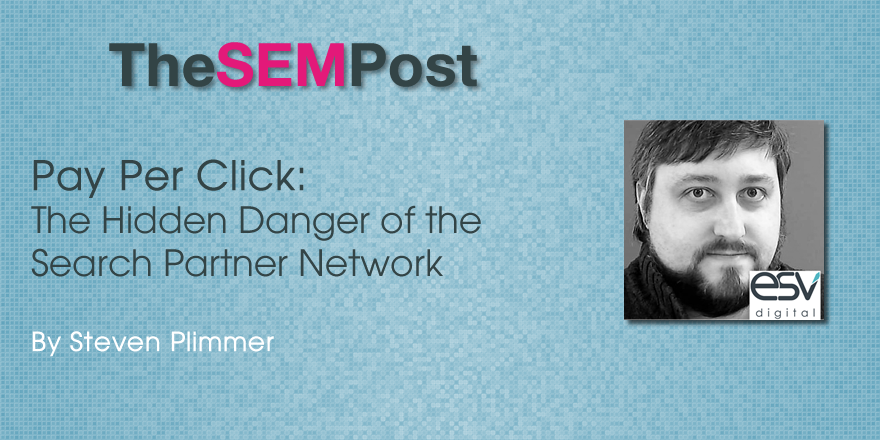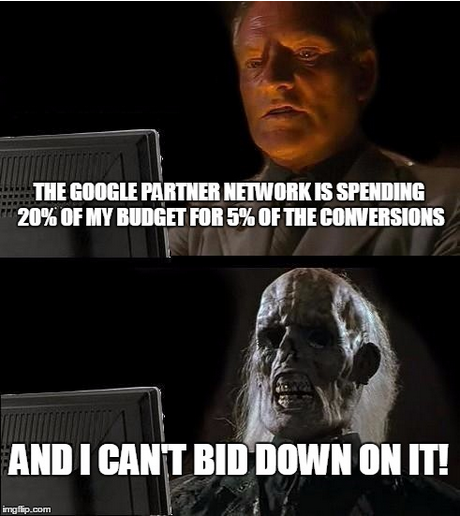
There are times when you may feel overall performance has worsened, for example, but the reality may be that you have received more traffic from the Partner Network than before and so the top level average has been lowered.

Things to Know
Here are some important facts to understand about the Partner Network:
- They are all kinds of sites and you cannot filter them.
- They will display results and ads in a number of different ways – so “position 1” could look very different from one place to another. Plus there could be all kinds of other advertising “noise” on the page like banners.
- They do not use any ad extensions like Sitelinks.
- They have fewer ads per SERP, typically.
- You will never know who they all are.
- You cannot have a campaign that only targets them but you can remove Partner sites entirely.
- You cannot bid differently for Partner sites.
Options and Ideas
So this being the situation, what do you do? Well, the setting for toggling Partners on or off is at the campaign level, so you can’t even be that granular for this lever. Therefore, you just need to review each campaign and see how the Partners Network performs and pause accordingly.
You will probably find that CTR is much lower than Google sites – often a third or less – and CPCs are also a bit lower. They do convert but normally at a lower rate and rarely contribute more than about 10% of total conversions so if the lower efficiency is bad enough for you to pause them, that is the option open to you.
One experiment for your account worth trying is setting up two identical campaigns (or copying an existing one) with everything the same except one excludes Partners and one includes them. The one that includes them should have 30% lower bids than the campaign that excludes them. The theory is that the vast majority of direct Google searches will be served ads from the original campaign with Partners excluded and the Partner campaign will constitute almost exclusively Partner traffic. This is a possible way to get control of your bidding for this lower-quality traffic.
Conclusion
Although the Partners on Google and BingAds are not necessarily killing your account, they could be having a strong enough effect on your numbers to take a second look and assess how you manage this challenging aspect of SEM.
Don’t rush into anything, thoroughly review the data and take granular decisions rather than blanket ones. If you’re campaigns have a capped budget and you’re hitting it, the simple act of turning off the Partners network could notably improve your KPIs but only if the data supports this.
It’s one of the big frustrations common to the main SEM platforms that you have so little room to maneuver on the Partner Sites but hopefully, this post has given you food for thought. Have you had any big successes with an innovative strategy for Partner Network traffic? Feel free to comment and let us know.
Steven Plimmer
Latest posts by Steven Plimmer (see all)
- Drive Sales With These 12 PPC Remarketing Tactics - May 2, 2016
- CRO: Frame Your Customers’ Choices to Maximize Revenue - April 1, 2016
- In PPC, What Was True Then May Not Be True Now - February 11, 2016
- 5 Great Ways to Customize Your SEM Ads to Your Audience - January 15, 2016
- PPC: When To Automate And When Not To Automate - December 4, 2015